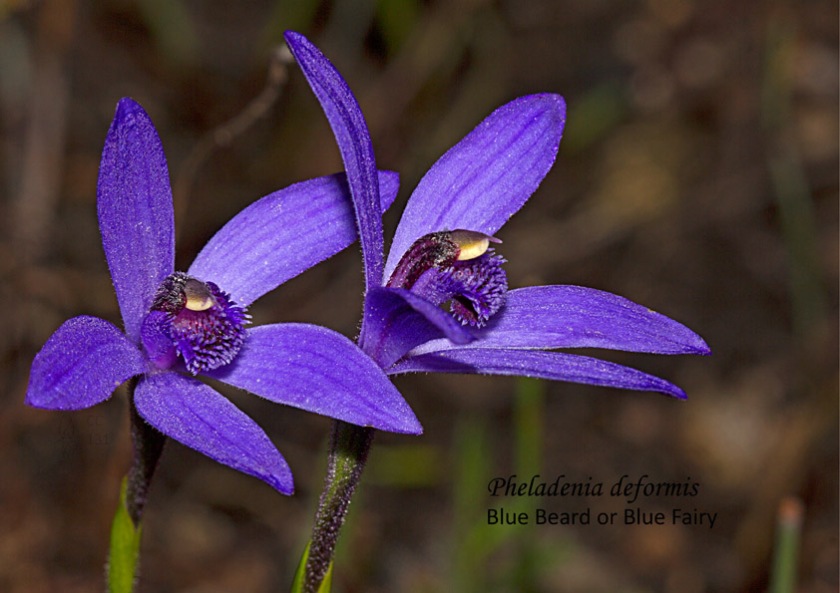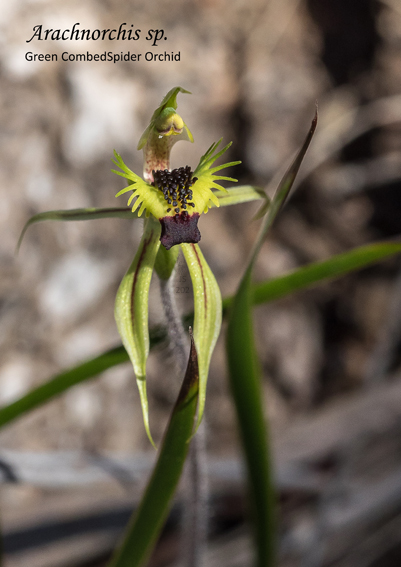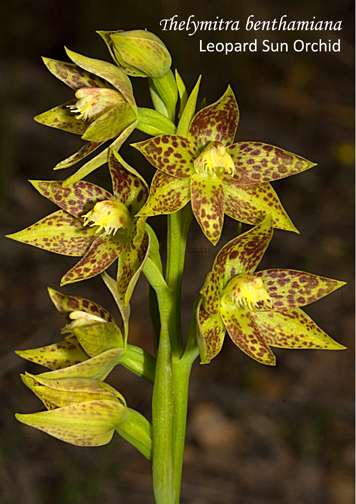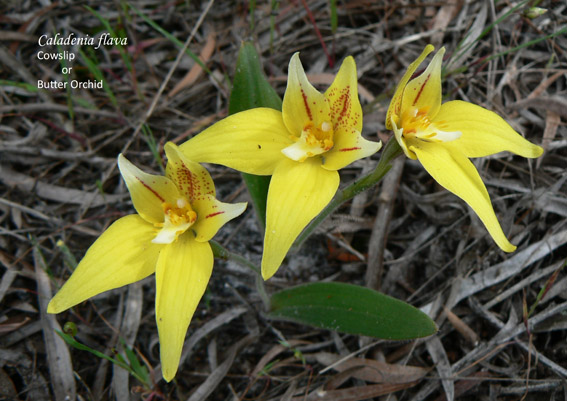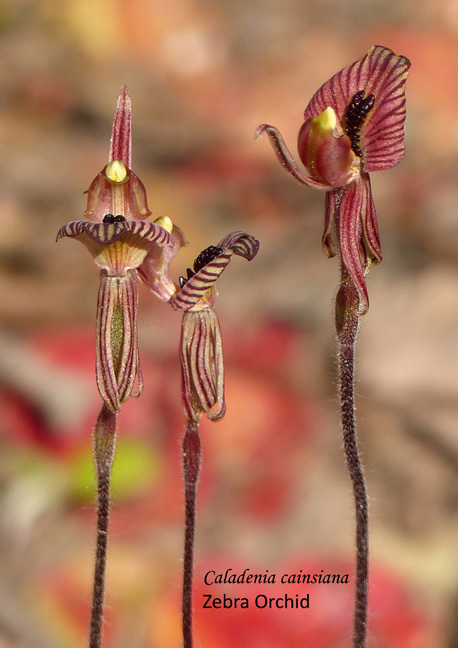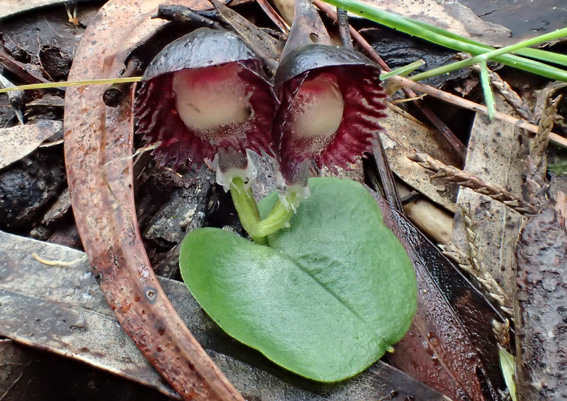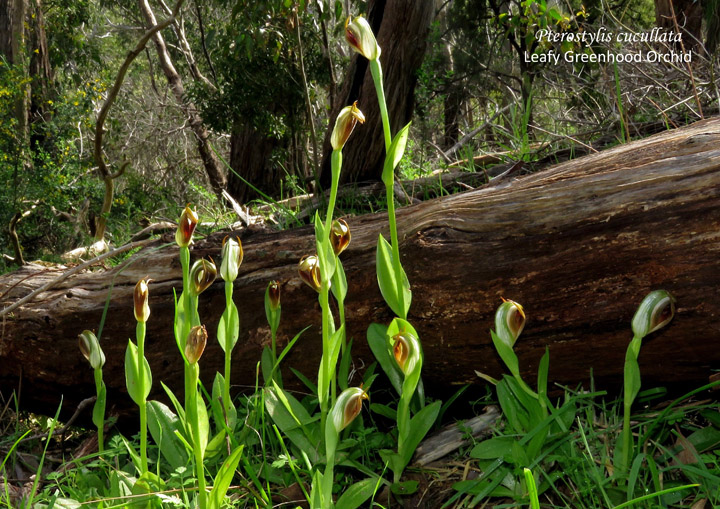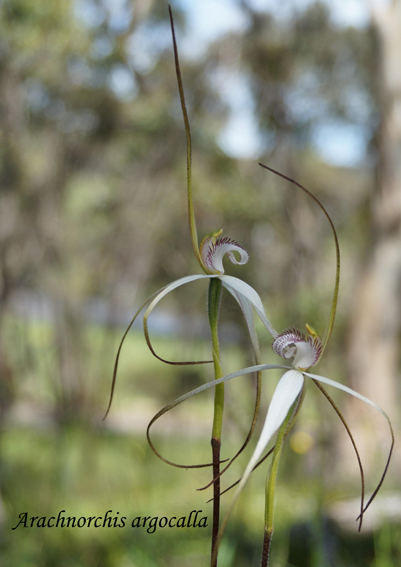Spring is here and it was reflected in the variety and large number of entries. Lorraine Badger and Ros Miller entered Western Australian species – Caladenia x ericksoniae (Prisoner Orchid) and Paracaelana nigrita (Flying Duck Orchid) respectively. The other six entries were all from South Australia, Diplodium robustum (Common Green Shell Orchid), Caleana major (Flying Duck Orchid) both from Jane Higgs, Greg Sara’s Oligochaetochilus sp (Rufoushood), Judy Sara’s Arachnorchis leptochila (Queen Spider Orchid), Claire Chesson’s Diuris behrii (Cowslip Orchid or Golden Moths) and the outstanding winning picture Pterostylis cucullata by Bevin Scholz.

In many ways, Bevin’s picture of P. cucullata (Leafy Greenhood) is a special picture because it represents some of the conservation work with which NOSSA is involved. For many years NOSSA has worked with the Threatened Plant Action Group (TPAG) to weed the areas in Belair where this species is located and to see such a good show of plants is encouraging. It is a tribute to all who have contributed with their time and labour.
P. cucullata is rated Vulnerable both in South Australia and Victoria, and Endangered in Tasmania. It is also rated Vulnerable under the EPBC Act (Federal). Nationally it is known from about 110 sites with most of these sites being in Victoria and only a few sites in South Australia with Belair National Park having the largest and most important population for the state.
Historically this species covered an area of 2107 km2 in the Lofty Block region but that has now contracted by 82% to only 366 km2 with few locations. With such a reduced range, recovery plans were developed, both at state and federal level. The plans examined the risks and threats to the survival of the different populations.
One of the threats to this orchid is fire, including proscribed burns. Unlike some species such as Pyrorchis nigricans, Leptoceras menziesii or Prasophyllum elatum which flower well after fire, P. cucullata is fire sensitive; populations decline substantially. There does not seem to be a safe time to burn for this species. Should a population survive a burn, it would take it many years to recover.
Fire also leaves the population vulnerable to another threat, that of weed invasion. Unfortunately, it is weedy where this species survives but over the years, a consistent, targeted weeding program has resulted in a declining weed population. NOSSA and TPAG have appreciated the work and effort of volunteers and gladly welcome anyone else who would like to join. And one of the rewards? A beautiful, sunlit display of flowers as seen in Bevin’s picture.
Reference:
Duncan, M. (2010). National Recovery Plan for the Leafy Greenhood Pterostylis cucullata. Department of Sustainability and Environment, Victoria https://www.environment.gov.au/system/files/resources/14e1ae30-5cf7-4be6-8a35-2c752886c14f/files/pterostylis-cucullata.pdf
Nature Conservation Society of South Australia (2009) DRAFT RESPONSE ON THE BELAIR NATIONAL PARK TRAILS MASTERPLAN: PRELIMINARY ISSUE January 2009 http://www.ncssa.asn.au/images/stories/ncssasubmission_belairnptrails_masterplan_jan09_final.pdf
Quarmby, J.P. (2010) Recovery Plan for Twelve Threatened Orchids in the Lofty Block Region of South Australia 2010. Department of Environment and Natural Resources, South Australia https://www.environment.gov.au/system/files/resources/e362cfd2-a37b-443a-b007-db3a2b7b64dd/files/lofty-block-orchids-recovery-plan.pdf

